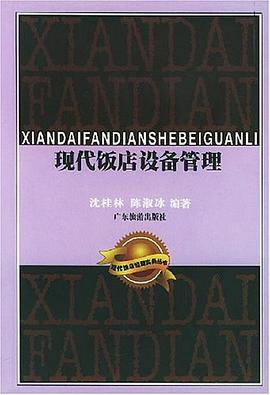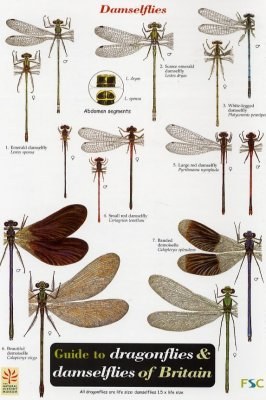

具体描述
内容简介
这是一本让读者在现代程序设计环境中学习如何生成和
分析常用数据结构的教材。书中介绍了如何用Java语言设计
与实现传统的数据结构。不书有下列特点:
用Java这一开放的、纯面向对象的语言作为描述语言。
采用面向对象方法来设计传统的数据结构;引入类、界面、
继承、封装等思想。
全书结构严谨,前后连接自然,内容简洁而又清晰。
使用适应于事物本身规律的方法来描述事物,亦即用对象、
类这一封装了数据和操作的结构来描述数据组织。
不仅讲述了如何用Java实现数据结构,而且抽象出一般的设计
原则;掌握并灵活运用这些原则,可以使读者受益非浅。
书中有50多个已实现并经过测试的类。这些类构成一个结构
包,可以作为程序员编程的基础。
书中有大量实例,告诉读者如何去使用定义好的数据结构。
每一章后有大量精心设计的提问,可以帮助读者复习和进一
步提高。
本书适合于本科高年级学生使用。本书附录A虽有Java语
言的简介,但对不熟悉Java语言的读者,建议最好在学习本
书前花上几周时间了解Java语言。
作者简介
目录信息
Contents
Preface
0 Introduction
0.1 Read Me
0.2 He Can't Say That, Can He?
1 The Object-Oriented Method
1.1 Data Abstraction and Encapsulation
1.2 The Object Model
1.3 Object-Oriented Terminology
1.4 Sketching an Example: A Word List
1.5 A Special Purpose Class: A Bank Account
1.6 A General Purpose Class: An Association
1.7 Interfaces
1.8 Who Is the User?
1.9 Conclusions
2 Comments, Conditions, and Assertions
2.1 Pre- and Postconditions
2.2 Assertions
2.3 Craftsmanship
2.4 Conclusions
3 Vectors
3.1 Application: The Word List Revisited
3.2 Application: Word Frequency
3.3 The Interface
3.4 The Implementation
3.5 Extensibility: A Feature
3.6 Application: The Matrix Class
3.7 Conclusions
4 Design Fundamentals
4.1 Asymptotic Analysis Tools
4.1.1 Time and Space Complexity
4.1.2 Examples
4.1.3 The Trading of Time and Space
4.2 Self-Reference
4.2.1 Recursion
4.2.2 Mathematical Induction
4.3 Properties of Design
4.3.1 Symmetry
4.3.2 Friction
4.4 Conclusionp
5 Sorting
5.1 Approaching the Problem
5.2 Selection Sort
5.3 Insertion Sort
5.4 Mergesort
5.5 Quicksort
5.6 Sorting Objects
5.7 Vector-Based Sorting
5.8 Conclusions
6 Lists
6.1 Example: A Unique Program
6.2 Example: Free-Lists
6.3 Implementation: Singly-Linked Lists
6.4 Implementation: Doubly-Linked Lists
6.5 Implementation: Circularly-Linked Lists
6.6 Conclusions
7 Linear Structures
7.1 Stacks
7.1.1 Example: Simulating Recursion
7.1.2 Vector-Based Stacks
7.1.3 List-Based Stacks
7.1.4 Comparisons
7.2 Queues
7.2.1 Example: Solving a Coin Puzzle
7.2.2 List-Based Queues
7.2.3 Vector-Based Queues
7.2.4 Array-Based Queues
7.3 Example: Solving Mazes
7.4 Conclusions
8 Iterators
8.1 Java's Enumeration Interface
8.2 The Iterator Interface
8.3 Example: Vector Iterators
8.4 Example: List Iterators
8.5 Example: Filtering Iterators
8.6 Conclusions
9 Ordered Structures
9.1 Comparable Objects
9.1.1 Example: Comparable Integers
9.1.2 Example: Comparable Associations
9.2 Keeping Structures Ordered
9.2.1 The OrderedStructure Intertace
9.2.2 The Ordered Vector
9.2.3 Example: Sorting
9.2.4 The Ordered List
9.2.5 Example: The Modified Parking Lot
9.3 Conclusions
10 Trees
10.1 Terminology
10.2 The Interface
10.3 Motivating Example: Expression Trees
10.4 Implementation
10.4.1 The BinaryTreeNode Implementation
10.4.2 Implementation of the BinaryTree Wrapper
10.5 Traversals
10.5.1 Preorder Traversal
10.5.2 Inorder Traversal
10.5.3 Postorder Traversal
10.5.4 Levelorder Traversal
10.5.5 Recursion in Iterators
10.6 Property-Based Methods
10.7 Example: Huffman Compression
10.8 Conclusions
11 Priority Queues
11.1 The Interface
11.2 Example: Improving the Huffman Code
11.3 Priority Vectors
11.4 A Heap Implementation
11.4.1 Vector-Based Heaps
11.4.2 Example: Heapsort
11.4.3 Skew Heaps
11.5 Example: Circuit Simulation
11.6 Conclusions
12 Search Trees
12.1 Binary Search Trees
12.2 Example: Tree Sort
12.3 Implementation
12.4 Splay Trees
12.5 Splay Tree Implementation
12.6 Conclusions
13 Dictionaries
13.1 The Interface
13.2 Unit Cost Dictionaries: Hash Tables
13.2.1 Open Addressing
13.2.2 External Chaining
13.2.3 Generation of Hash Codes
13.2.4 Analysis
13.3 Ordered Dictionaries and Tables
13.4 Example: Document Indexing
13.5 Conclusions
14 Graphs
14.1 Terminology
14.2 The Graph Interface
14.3 Implementations
14.3.1 Abstract Classes
14.3.2 Adjacency Matrices
14.3.3 Adjacency Lists
14.4 Examples: Common Graph Algorithms
14.4.1 Reachability
14.4.2 Topological Sorting
14.4.3 Transitive Closure
14.4.4 All Pairs Minimum Distance
14.4.5 Greedy Algorithms
14.5 Conclusions
A A Sip of Java
A.l A First Program
A.2 Declarations
A.2.1 Primitive Types
A.2.2 Reference Types
A.3 Important Classes
A.3.l The ReadStream Class
A.3.2 PrintStreams
A.3.3 Strings
A.4 Control Constructs
A.4.l Conditional Statements
A.4.2 Loops
A.5 Methods
A.6 Inheritance and Subtyping
A.6.l Inheritance
A.6.2 Subtyping
A.6.3 Interfaces and Abstract Classes
B Use of the Keyword Protected
C Principles
D Structure Package Hierarchy
E Selected Answers
Index
· · · · · · (收起)
Preface
0 Introduction
0.1 Read Me
0.2 He Can't Say That, Can He?
1 The Object-Oriented Method
1.1 Data Abstraction and Encapsulation
1.2 The Object Model
1.3 Object-Oriented Terminology
1.4 Sketching an Example: A Word List
1.5 A Special Purpose Class: A Bank Account
1.6 A General Purpose Class: An Association
1.7 Interfaces
1.8 Who Is the User?
1.9 Conclusions
2 Comments, Conditions, and Assertions
2.1 Pre- and Postconditions
2.2 Assertions
2.3 Craftsmanship
2.4 Conclusions
3 Vectors
3.1 Application: The Word List Revisited
3.2 Application: Word Frequency
3.3 The Interface
3.4 The Implementation
3.5 Extensibility: A Feature
3.6 Application: The Matrix Class
3.7 Conclusions
4 Design Fundamentals
4.1 Asymptotic Analysis Tools
4.1.1 Time and Space Complexity
4.1.2 Examples
4.1.3 The Trading of Time and Space
4.2 Self-Reference
4.2.1 Recursion
4.2.2 Mathematical Induction
4.3 Properties of Design
4.3.1 Symmetry
4.3.2 Friction
4.4 Conclusionp
5 Sorting
5.1 Approaching the Problem
5.2 Selection Sort
5.3 Insertion Sort
5.4 Mergesort
5.5 Quicksort
5.6 Sorting Objects
5.7 Vector-Based Sorting
5.8 Conclusions
6 Lists
6.1 Example: A Unique Program
6.2 Example: Free-Lists
6.3 Implementation: Singly-Linked Lists
6.4 Implementation: Doubly-Linked Lists
6.5 Implementation: Circularly-Linked Lists
6.6 Conclusions
7 Linear Structures
7.1 Stacks
7.1.1 Example: Simulating Recursion
7.1.2 Vector-Based Stacks
7.1.3 List-Based Stacks
7.1.4 Comparisons
7.2 Queues
7.2.1 Example: Solving a Coin Puzzle
7.2.2 List-Based Queues
7.2.3 Vector-Based Queues
7.2.4 Array-Based Queues
7.3 Example: Solving Mazes
7.4 Conclusions
8 Iterators
8.1 Java's Enumeration Interface
8.2 The Iterator Interface
8.3 Example: Vector Iterators
8.4 Example: List Iterators
8.5 Example: Filtering Iterators
8.6 Conclusions
9 Ordered Structures
9.1 Comparable Objects
9.1.1 Example: Comparable Integers
9.1.2 Example: Comparable Associations
9.2 Keeping Structures Ordered
9.2.1 The OrderedStructure Intertace
9.2.2 The Ordered Vector
9.2.3 Example: Sorting
9.2.4 The Ordered List
9.2.5 Example: The Modified Parking Lot
9.3 Conclusions
10 Trees
10.1 Terminology
10.2 The Interface
10.3 Motivating Example: Expression Trees
10.4 Implementation
10.4.1 The BinaryTreeNode Implementation
10.4.2 Implementation of the BinaryTree Wrapper
10.5 Traversals
10.5.1 Preorder Traversal
10.5.2 Inorder Traversal
10.5.3 Postorder Traversal
10.5.4 Levelorder Traversal
10.5.5 Recursion in Iterators
10.6 Property-Based Methods
10.7 Example: Huffman Compression
10.8 Conclusions
11 Priority Queues
11.1 The Interface
11.2 Example: Improving the Huffman Code
11.3 Priority Vectors
11.4 A Heap Implementation
11.4.1 Vector-Based Heaps
11.4.2 Example: Heapsort
11.4.3 Skew Heaps
11.5 Example: Circuit Simulation
11.6 Conclusions
12 Search Trees
12.1 Binary Search Trees
12.2 Example: Tree Sort
12.3 Implementation
12.4 Splay Trees
12.5 Splay Tree Implementation
12.6 Conclusions
13 Dictionaries
13.1 The Interface
13.2 Unit Cost Dictionaries: Hash Tables
13.2.1 Open Addressing
13.2.2 External Chaining
13.2.3 Generation of Hash Codes
13.2.4 Analysis
13.3 Ordered Dictionaries and Tables
13.4 Example: Document Indexing
13.5 Conclusions
14 Graphs
14.1 Terminology
14.2 The Graph Interface
14.3 Implementations
14.3.1 Abstract Classes
14.3.2 Adjacency Matrices
14.3.3 Adjacency Lists
14.4 Examples: Common Graph Algorithms
14.4.1 Reachability
14.4.2 Topological Sorting
14.4.3 Transitive Closure
14.4.4 All Pairs Minimum Distance
14.4.5 Greedy Algorithms
14.5 Conclusions
A A Sip of Java
A.l A First Program
A.2 Declarations
A.2.1 Primitive Types
A.2.2 Reference Types
A.3 Important Classes
A.3.l The ReadStream Class
A.3.2 PrintStreams
A.3.3 Strings
A.4 Control Constructs
A.4.l Conditional Statements
A.4.2 Loops
A.5 Methods
A.6 Inheritance and Subtyping
A.6.l Inheritance
A.6.2 Subtyping
A.6.3 Interfaces and Abstract Classes
B Use of the Keyword Protected
C Principles
D Structure Package Hierarchy
E Selected Answers
Index
· · · · · · (收起)
读后感
评分
评分
评分
评分
评分
用户评价
评分
评分
评分
评分
评分
相关图书
本站所有内容均为互联网搜索引擎提供的公开搜索信息,本站不存储任何数据与内容,任何内容与数据均与本站无关,如有需要请联系相关搜索引擎包括但不限于百度,google,bing,sogou 等
© 2025 book.wenda123.org All Rights Reserved. 图书目录大全 版权所有




















